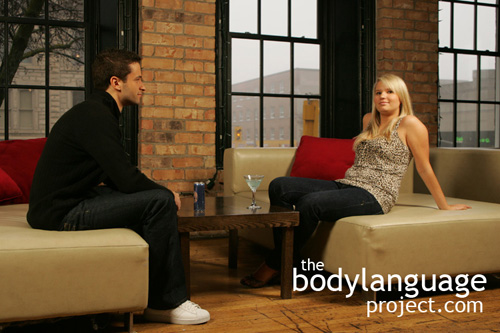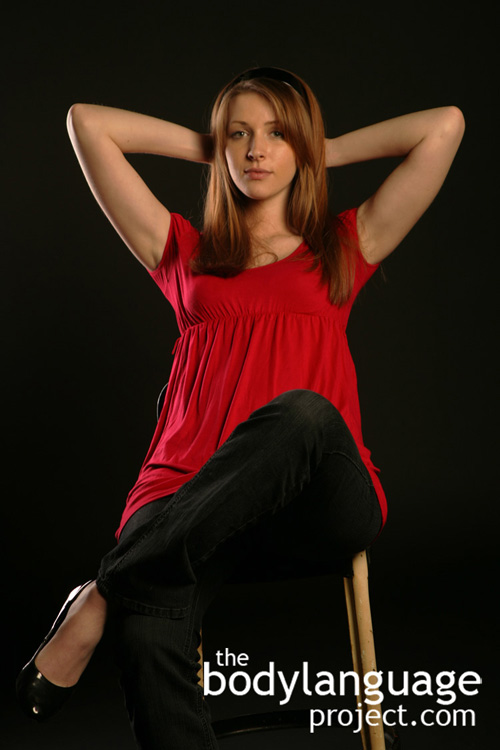
How does this posture appear fully nude?
My final thought in this opening chapter should keep your imagination in full gear because I am about to recommend that you do something naughty to become more proficient at reading body language. I’m instructing you to picture your body language subjects as if they were totally nude! Body language cues came about over our evolutionary history, so it naturally follows that they developed without clothing or coverings. Imagine, for example, a full body steeple where the arms are placed behind the head and the body leans back with the legs spread wide open – a crotch display! It is the way a proud (or arrogant) man sits to put his full package on display. True, it is slightly less offensive with clothing on, but it still carries the exact same meaning since its true intentions were delivered as if the clothing were absent. Picturing people naked helps us to think about not just the message, but also the route behind the message. Men who hold their legs spread wide open are perceived as arrogant but women who hold the exact same posture will be thought of as sexually open or “easy.” While each party might not specifically intend to deliver this message, it matters little to how others subconsciously perceive them.

What is her body saying with it’s “openness.”
Arrogance and sexual openness are not the only gestures that are made more salient by picturing people naked but they are the most dramatic. We can also picture meek gestures in the same way. Women that place their hands over their laps are doing so for just the opposite reason as do women who spread their legs, they do so to hide or protect their genitals for view or from access. The same intention is obvious when women fold their arms over their chest. They are trying to hide and protect their breasts since someone or something has made them withdraw and has made them insecure. Naturally, their arms fold, one over the other, and they hide from view something important to them. There will be times though, when protection isn’t the reason, arm crossing due to being cold is one of them. We will discuss the importance of context in this regard in more detail later. There are other times still, when women put themselves on full display. Women do so by walking with their hips forward and chest back. This is called the parade and her intension is to have men and subordinate women take notice. If you have trouble visualizing this, put it in the context of the local nightclub. Suddenly you see that it follows naturally, and next time at a bar, you might actually notice it in an authentic context.
While we are on the subject of nudity, think about how and where we hold our possessions. A handbag can be held to our sides, but equally, it can be placed on our laps or held to our chest. Handbags therefore, can have a protective shielding purpose, as do other objects in our environment and some women will even admit this as fact by tell you that they feel naked without one! Desks can be used as barricades to block ourselves from view and chairs with backs can be used in full on assault by turning them backwards and straddling them, putting the “boys” or “girls”, on full display. Then from the security of our seated position we can toss verbal arrows and spears. People who sit in this way are obviously aware of being fully clothed and most certainly wouldn’t sit this way while naked, but that’s not the point. The point is that people continue to sit this way despite holding the evolutionary hardwiring telling them that the way they are sitting is offensive. Someone that is defensive, on the other hand, will use desks, walls, doors, or other barriers to protect and hide themselves rather than flaunt. You can think of shields such as handbags or jackets like towels, objects that we use fresh out of the shower to block our private areas from view and appropriately conceal our modesty. An excellent example of a real life “towel” and one that is very commonly used during presentations is the podium. Most would say that it is a great place to store our notes and an area to place the microphone, and nothing more, but in reality it’s a place of refuge that public speakers us to escape full view of the crowd. Only the most confident speakers who are accustomed to being exposed in front of large audiences will move about a stage for everyone to see.
So in summary, do as any amateur public speaker is recommended to do, when in doubt, and to make the points expressed in this book more salient, picture your targets naked!




